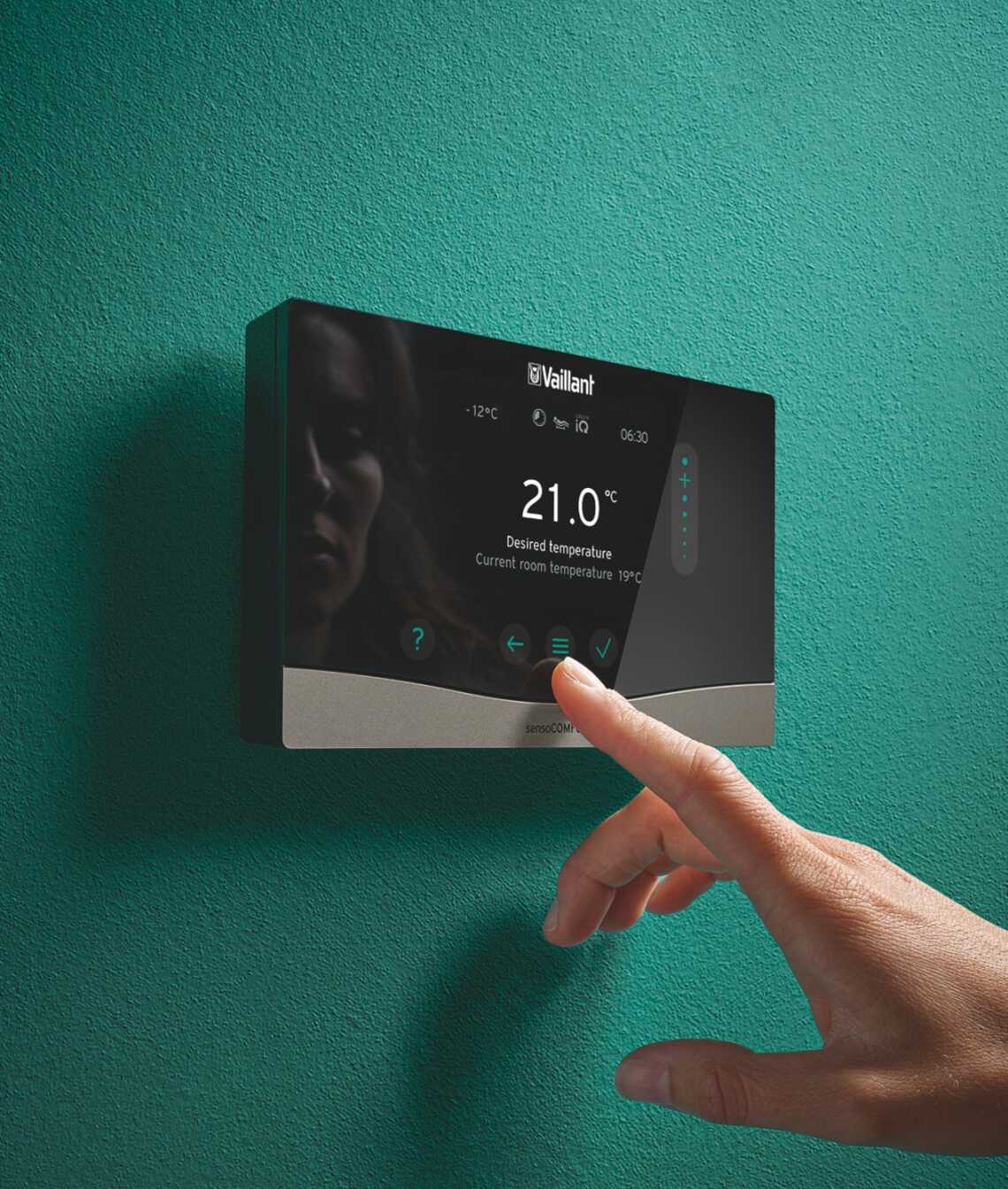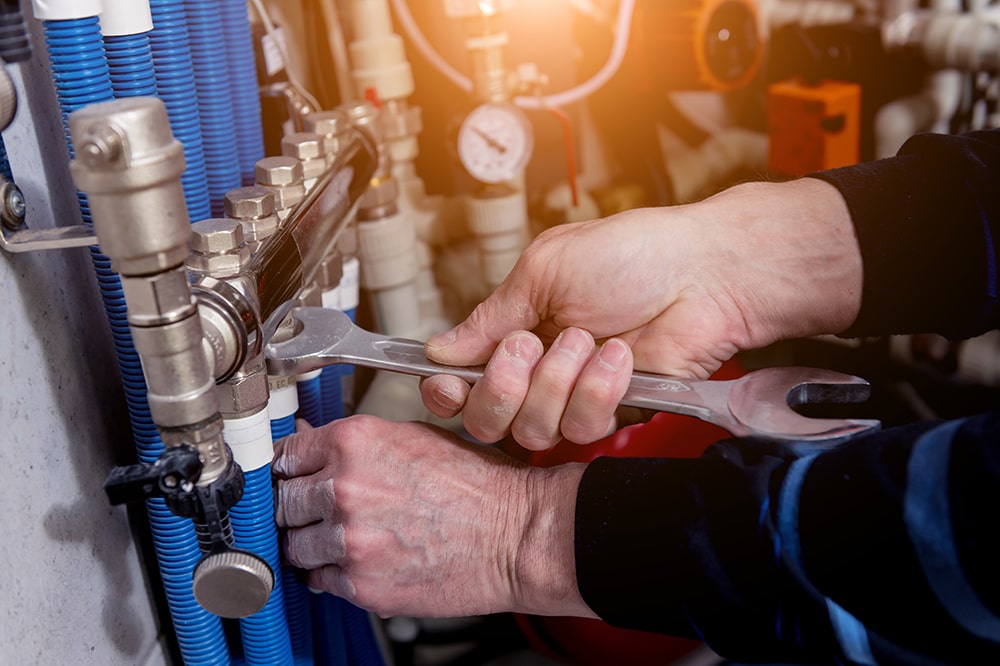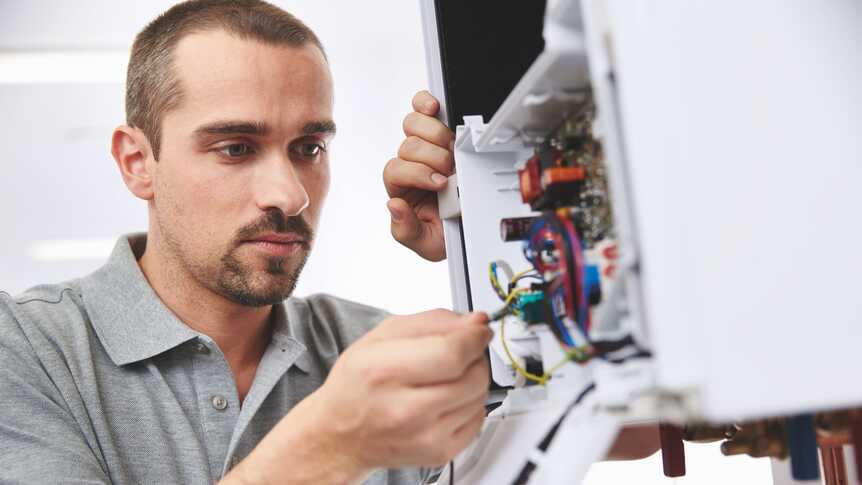Heating Controls
Heating controls are devices like thermostats, programmers, and radiator valves that manage your heating system's timing and temperature, allowing you to heat your home efficiently for improved comfort and lower energy bills.

✦ Heating controls
Heating controls is a broad term covering components that tell your heating to come on and off and set the temperature of your home.
Many boiler heating controls are adjusted manually. More modern versions can connect to the internet to learn your heating habits and change the settings automatically.
This guide covers heating controls for gas, oil and liquid petroleum gas (LPG) boilers. While these controls are found in many heating systems, the advice for using them varies if you have electric heating or a renewable energy system.
If you use electric heating, read our guide on electric storage heater controls.
What are the benefits of heating controls?
Keep your home warm
Heating controls help you keep your home comfortably warm without over-heating your rooms and wasting energy.
Lower your heating bills
By installing and using your heating controls effectively, you could use less energy and save money on your heating bills. In fact, installing heating controls could save you £110 a year in Great Britain (GB) and £120 in Northern Ireland (NI).
More convenient
Some heating controls let you control your heating via an app. This lets you adjust your heating while you’re out, so you can get your home nice and cosy for when you get home.

heating controls
A programmer (time control)
At least one room thermostat
Thermostatic radiator valves (TRVs)
How do I use my heating controls?
What do heating controls do?
A timer or programmer controls when your heating comes on and off.
If you have a hot water cylinder, you will also have a timer to control when your water is heated, too.
This is useful because you can programme your heating to fit your routine. If you’re not at home or don’t need heating at night, you can programme the heating to switch off during these times.
If you have a hot water cylinder, you’ll also have a timer to control when your water is heated, too.
Older programmers are simple timers that only run once a day, but modern programmers offer options to control multiple on and off periods.
Depending on how your central heating system was installed, programmers are either:
- Single channel: for combi boilers. This only controls central heating as hot water is provided on demand.
- Two channel: for system boilers controlling heating and hot water, or combi boilers controlling two heating zones (eg upstairs and downstairs).
- Three channel: for system or regular boilers controlling hot water and two separate heating zones (eg upstairs and downstairs).
A room thermostat keeps your home at a steady temperature. It turns the heating on until it reaches your chosen temperature, then switches it off until the room cools slightly.
You should set your thermostat to the lowest comfortable temperature, which for most people is between 18°C and 21°C. And if you turn the thermostat down by just one degree, from 22°C to 21°C, you could save £90 in GB and £100 in NI.
You don’t need to turn your thermostat up when it is colder outside. The house will heat up to the set temperature regardless. It may take a little longer on colder days, so you might want to set your heating to come on earlier in the winter.
A programmable room thermostat combines time and temperature controls in a single unit and can set different temperatures for different times of the day.
Some heating systems may use two programmable thermostats (upstairs and downstairs) rather than a single thermostat for the whole house.
With this type of thermostat, you can also set a lower ‘set back’ temperature – this is a minimum temperature that you don’t want your home to drop below. For example, you might want your rooms at 20°C when you’re at home but set it not to drop below 16°C overnight or when you’re out.
Thermostatic radiator valves (TRVs) control how much hot water flows through each radiator. Each TRV has a dial, often numbered 0-6, where 0 is off and 6 is fully open. Turn the dial clockwise to reduce the temperature and anticlockwise to increase it.
The TRV senses the room temperature and adjusts an internal valve automatically. When the room reaches the temperature you’ve set, the valve partially closes to reduce hot water flow. When the room cools, it opens again to allow more heat.
To save energy, set each TRV to the lowest number that keeps the room comfortable. For example, you might set a spare bedroom lower than your living room.
We don’t recommend using radiator covers as they prevent the TRV from getting an accurate temperature reading. Warm air can get trapped under the cover, and the TRV senses that the room is warmer than it actually is.
These are TRVs with timing control as well. They let you set each radiator to come on at different times and heat each room only when you want to. Some models can be connected via Wi-Fi to smart heating controls, letting you create a new zone for each room.
Smart heating controls can do everything that conventional controls do. The main difference is that smart controls are connected to the internet and offer more functionality.
Some of the features they can offer include:
- Easy to use time and temperature controls with user-friendly interfaces, making it simpler to check and change the on/off periods for heating and hot water.
- Letting you turn the system on or off and change the temperature using your smartphone when you’re not at home.
- Learning your habits and adjusting controls to match — for example, turning up the thermostat in the evening.
- Tracking your location using your smartphone's GPS, a feature known as ‘geo-fencing’, which can automatically switch off your heating when you're away and turn it back on before you return. You can set this to happen automatically or get a notification asking for permission before making any changes.
Many of these features are optional, allowing you to customize the settings to suit your preferences. For instance, you can choose not to use the location-tracking option.
Whether smart heating controls will save you money depends on how you currently manage your heating. For more information, read our expert blog on smart energy-saving tech.
The thermostat stops the cylinder from becoming hotter than it needs to be. Once the water reaches the set temperature, the heat supply from the boiler will be turned off.
You should set the temperature of the hot water thermostat between 60°C and 65°C. This is hot enough to kill harmful bacteria in the water, but be careful, as it’s also hot enough to scald.
Your boiler’s thermostat controls how hot the water gets before it’s pumped to your radiators – this is called the flow temperature. As this water travels through your radiators, it cools down before returning to the boiler at what’s called the return temperature.
If your flow temperature is set higher than needed, lowering it could save you money. This is because a lower flow temperature means a lower return temperature, which helps your boiler work more efficiently.
However, be careful not to set it too low. If the flow temperature isn’t high enough, your radiators won’t get hot enough to warm your home properly, especially during cold weather. You’ll need to find the right balance between efficiency and keeping your home warm enough.
If you have a regular boiler with a separate hot water cylinder, there’s only one control for both your radiators and hot water. You need to make sure the temperature is set high enough so that you have hot water. This should be no lower than 65°C so that it can heat your cylinder to 60°C. This is very important to prevent the growth of harmful bacteria.
A weather compensator automatically measures the outside temperature and adjusts the boiler thermostat temperature as needed. This means you don’t have to worry about keeping your boiler running efficiently as the weather becomes colder or warmer.
A load compensator measures the difference between the internal air temperature and what has been set on your room thermostat. It can then adjust the boiler thermostat to prevent overheating.
If you have a system or regular boiler with a hot water cylinder, you should have a programmer, room thermostat, and cylinder thermostat. These controls should be connected to create a ‘boiler interlock’. This means the boiler switches off if the heating and hot water thermostats have reached their set temperatures.
Without an interlock, the boiler keeps running even if the heat isn’t needed. Building regulations require all new and replacement systems to be interlocked.
If you want to heat different rooms at different times of the day, zone controls do this for you automatically. They do this by having separate programmable heating circuits for different parts of the house. This usually includes one zone upstairs and another downstairs, but you could have more zones. For example, homes with underfloor heating sometimes have a room thermostat for each room, meaning each room is a zone.
If you’re fitting a new heating system, consider zone controls to help keep your heating costs down by avoiding heating rooms you’re not using. You might need zone controls to meet building regulations if your home is large enough.
If you’re not fitting a new system, using programmable TRVs may be a more practical solution.

How do I get
heating controls?
We recommend you get quotes from at least three different installers to make sure you’re getting value for money. Make sure the installers you speak to are certified with a scheme like TrustMark and are registered with:
- GasSafe (for gas boilers)
- OFTEC (for oil boilers)
The installer will look at your current set up and make recommendations for what controls are suitable for your home.

